Garden blueberry, or popularly called drunkard, blue grapes, or commonweed, is a very useful, but demanding to plant and care, shrub crop from the Heather family.Its many positive qualities include high frost resistance, healing properties of leaves and berries, valuable composition of fruits, versatility in use and storage of crops.
|
The photo shows a garden blueberry bush. Depending on the type and variety, the average growth of berry bushes ranges from eighty centimeters to two meters. Some tall crops exceed the three-meter mark. |
| Content:
|
The plant consists of a fibrous root, erect brown or dark gray skeletal branches, green young stems, small leaf blades with a smooth waxy surface about three centimeters long, pale pink five-toothed flowers and rounded flat blue fruits.
The average weight of one berry is about two grams, with tall varieties up to five grams. Under the thin skin with a bluish coating there is pale green, sweet-tasting and juicy pulp with a slight sourness.
Growing and caring for garden blueberries
When growing blueberries in a garden plot, it is necessary to choose the right place and prepare the soil, observe the deadlines and take into account the planting features, and carry out regular care.
Choosing a place to plant blueberries
For light-loving shrubs, an open place with full lighting during the day and no drafts is suitable. It is very important that crops are not exposed to sudden gusts of wind, as a result of which the fruits lose their protective bluish coating.Without it, preserving the fruits will be much more difficult. You can use the south side near the fence (at a distance of at least one to one and a half meters) or near a building. Groundwater must be at great depth.
|
It is better to plant blueberries in a sunny place where there are no drafts. |
On a note! In shady and semi-shady areas, the blueberry yield will be very low, and the taste of the berries is unlikely to be to anyone’s liking.
If the selected land area is on the north side of the garden, then you can build a screen from agrofibre or use a hedge as a protective area.
Reference! Blueberries have a negative attitude towards any predecessors. It is recommended to plant it on those plots of land that have been fallow for several seasons.
Soil preparation
Blueberries prefer acidic or slightly acidic soils. In composition they can be peaty-loamy or peaty-sandy, always loose. If there is a clay area, good drainage is recommended. The drainage effect can be achieved by adding crushed bark or sawdust from conifers, small young broken twigs, and moss to the soil.
|
Three parts of peat and one part of sand are added to loamy soil before planting. |
Planting holes must be prepared two to four weeks before planting if it is carried out in the fall, and approximately in September - October if in the spring. The dimensions of the planting pit depend on the composition of the soil. For example, on sandy-peat areas the depth is about sixty centimeters and the width is up to one meter, on light loams it is about forty centimeters deep, on heavy loamy areas it is no more than twenty centimeters deep.
Attention! In clayey areas, blueberries can only be planted in ridges. First, a hole up to ten centimeters deep is prepared, and then a hill is built over it from a special substrate, which includes garden soil with sawdust, high-moor peat and sand. The bush is planted in the middle of this mound. After planting, mulch.
Blueberries do not tolerate organic fertilizers (mullein, chicken droppings, wood ash, manure), so the soil is removed from the planting hole, after which it is filled with drainage material and prepared soil mixture. For each seedling, forty to fifty grams of sulfur are added to the substrate, as well as complex mineral fertilizers containing nitrogen, potassium and phosphorus.
The distance between plantings is from one to one and a half meters (depending on the variety), between rows - from two to three meters.
When is it better to plant blueberries in spring or autumn?
It is recommended to plant seedlings with an open root system in early spring. Before the onset of winter cold, crops will be able to take root and adapt to new conditions. The immune system will be strengthened, and after wintering the plants will bear their first flowering and fruiting. Young shrubs with closed roots tolerate spring, summer and autumn planting well.
Rules for planting blueberries in spring
- The optimal time for planting blueberries in spring is before the buds swell.
- Before planting, seedlings are placed in a container with cold water for fifteen to thirty minutes.
- Place a seedling in a hole with a nutrient substrate, carefully straighten the roots, sprinkle with soil so that the root collar is at a depth of two to three centimeters.
- After soil compaction, abundant watering and mulching of the tree trunk circle with sawdust, straw or crushed bark are carried out.The thickness of the mulch layer is ten or twelve centimeters.
Blueberry care
When caring for garden strawberries, it is necessary to take into account the age of the seedling, weather conditions and time of year.
Watering requirements
The quantity and quality of the harvest depends on proper and timely watering. Excess and lack of moisture are equally dangerous for blueberry bushes. It is necessary to find a middle ground.
In the first year after planting, when the seedlings take root, watering is carried out frequently and abundantly. The soil around the blueberry bushes should not dry out. Usually two waterings a week are enough, but in drought conditions you can moisten the soil every other day.
|
Each plant will require ten liters of water in the morning and the same in the evening. |
Adult bushes are watered every three to four days. Any organic acid is added to irrigation water. For ten liters of water – one and a half tablespoons of citric acid or one glass of apple cider vinegar.
Reference! If there is insufficient watering, blueberries give a signal in the form of leaf blades that are twisted and beginning to turn yellow.
If the summer is hot and no precipitation is expected, plant crops can be treated with sprinkling in the morning or evening.
If over the summer period the seedlings have grown by fifty to seventy centimeters, it means that rooting was successful and the correct irrigation regime was chosen.
When, what and how many times a season to feed blueberries
Two years after planting the bush, you can apply fertilizers and fertilizing. One plant needs about five kilograms of plant compost and about twenty grams of a mineral complex.
In the third, fourth and fifth year, organic matter requires ten to fifteen kilograms per bush, and mineral fertilizers - about one hundred grams.You can take the Florofit or Target complex.
|
Mature fruiting plants are fed at the end of May or at the beginning of June with a mixture of potassium (one hundred grams) and phosphorus (one hundred and twenty grams), and at the end of August with ammonium nitrate (eighty grams). |
Important! It is recommended to apply fertilizers and fertilizing with nitrogen only until the end of June.
How to care for the soil
Caring for the soil around a blueberry bush consists of two to three loosenings per season to a depth of about seven to eight centimeters, weeding of weeds at the stage of their appearance and mulching. The soil is loosened after watering. Weeds are removed as they grow. Crushed pine bark or sawdust is used as a mulch layer (from five to fifteen centimeters thick).
Pruning rules
The formation of the bush must be carried out during the dormant period - from November to March. For sanitary purposes, blueberries are pruned throughout the warm season. In the spring it is worth ridding the bushes of frozen shoots and tops, and in the summer - from numerous green growths with signs of damage. You need to trim not only the damaged area, but also a couple of centimeters of the healthy part.
|
Scheme for autumn pruning of blueberry bushes |
Attention! It is recommended to treat all tools necessary for pruning with disinfectant solutions before and after the procedure.
When pruning an adult fruit-bearing plant, branches growing inside the crown and downwards, damaged tops, and bushy low shoots are removed.
In some cases, maximum (rejuvenating) pruning of the crop to the soil surface is performed.Such radical measures are used for a bush that is drying up from lack of moisture, for an abandoned plant without proper care for five to six years, for a very overgrown blueberry with many stems and small berries.
Disease and pest control
Blueberries are freed from harmful insects and caterpillars by spraying with Fundazol or Bordeaux mixture. To prevent the berries from becoming food for birds, the bushes can be covered with a thin mesh made of lightweight material.
Possible diseases of the berry crop are stem cancer, double spot, gray rot, monoliosis, anthracnose. Most often they develop due to improperly prepared soil during planting or excessive watering. As a preventative measure, treatment is carried out with Bordeaux mixture, Topaz, Topsin, Euparen.
Blueberry propagation
Garden blueberries reproduce in several ways.
Seed propagation
Freshly harvested seeds are sown in the fall directly into open ground, in pre-prepared and fertilized beds. Sowing depth is ten to fifteen millimeters.
|
For spring sowing, seed material that has undergone stratification for three months is required. |
The crops are sprinkled with a substrate of equal parts sand and peat, and the beds are moistened. Care consists of moderate watering, weeding, loosening and fertilizing. In the second year of life, the seedlings are transferred to a permanent site. The first harvest can be obtained in five to seven years.
Propagation of blueberries by cuttings
In autumn, after leaf fall or in early spring, before sap flow begins, cuttings are prepared. The length of each specimen is from eight to fifteen centimeters.For thirty days, the cuttings are kept at a temperature of one to five degrees Celsius, after which they are planted at an angle in a mixture of one part peat and two parts coarse sand. The cuttings will become full-fledged seedlings only after two years.
Dividing the bush
This method is used in early or mid-autumn. The bush or part of it is removed from the previously abundantly watered soil, divided into parts and immediately transplanted to a new place.
Important! Each part of the bush must have a full-fledged rhizome at least five to seven centimeters long.
Planting and caring for blueberries in autumn
In early September, you can still plant garden blueberry seedlings with an open root system, but in October or early November (in southern latitudes) only plants with closed roots are suitable for this.
Reference! At least thirty days must pass from the day of planting to the onset of the first frost. During this time, the seedlings will have time to take root and grow stronger.
Planting holes are filled with a drainage layer and prepared nutrient soil. A young seedling is placed in the center of the hole, sprinkled with soil, compacted and the soil around each bush is abundantly watered. When the water is absorbed, apply a layer of mulch at least fifteen centimeters thick.
|
Caring for autumn plantings consists of moderate watering at intervals of two to three days; in case of drought, watering is daily. |
It is also necessary to perform complete pruning of weak and damaged shoots and partial (50%) pruning of well-developed branches.
Preparing for winter
After regular autumn watering and timely pruning, each young bush, regardless of the variety, must be wrapped in burlap or other air-permeable material. You can secure the burlap using twine or nylon thread.Adult bushes are tied and bent to the ground, fixed in this position and also covered with natural material, and fallen leaves and spruce branches on top.
Important! Polyethylene cannot be used as a covering material. Without air circulation, plants will die.
Do not miss:
The most promising varieties of garden blueberries for planting in your summer cottage ⇒
Conclusion
Garden blueberries, if you follow simple planting and care rules, will definitely give you a lot of tasty and healthy fruits, and will also provide vitamins to all family members until the next season. The quantity and quality of the harvest is in the hands of each gardener.
Similar articles:
- Planting and caring for garden blackberries
- How to properly care for currants
- Currants in autumn: planting, transplanting, pruning, propagation
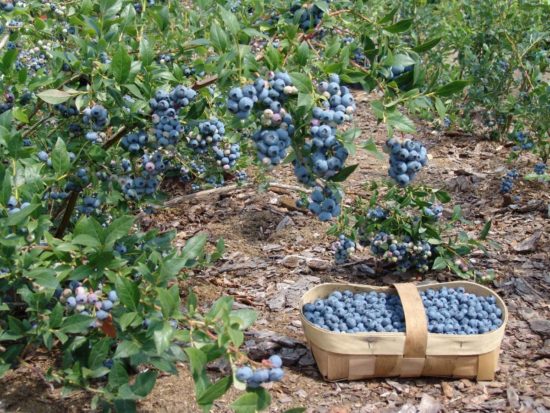
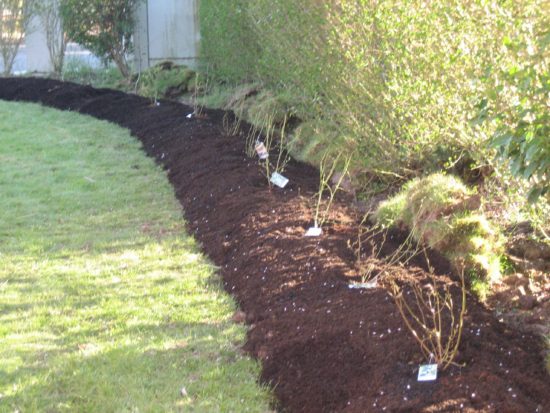
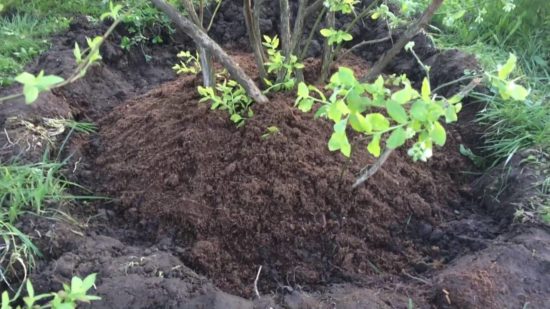
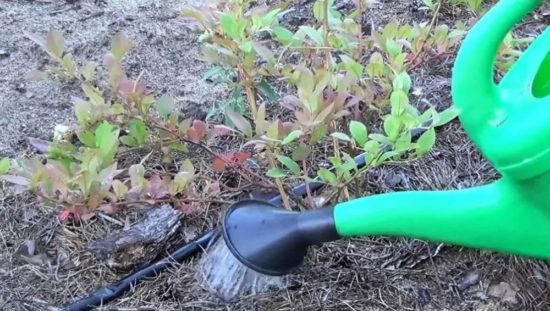
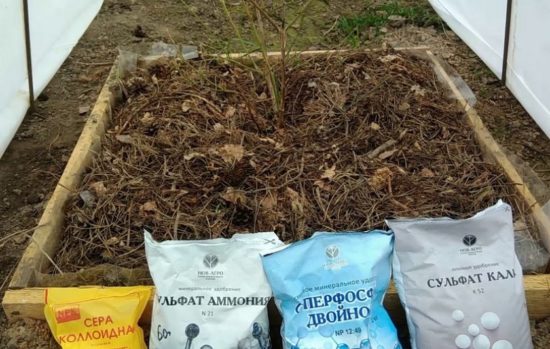


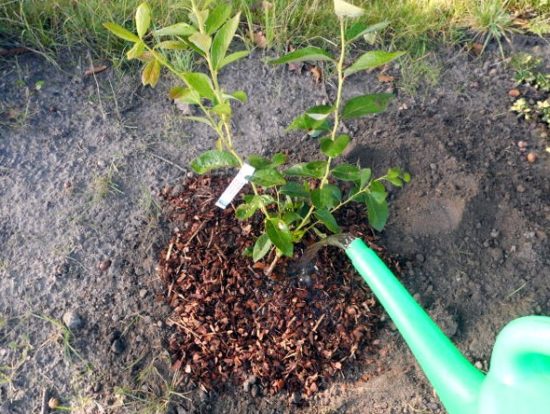

 CUCUMBERS NEVER GET SICK, I'VE BEEN USING ONLY THIS FOR 40 YEARS! I SHARE A SECRET WITH YOU, CUCUMBERS ARE LIKE THE PICTURE!
CUCUMBERS NEVER GET SICK, I'VE BEEN USING ONLY THIS FOR 40 YEARS! I SHARE A SECRET WITH YOU, CUCUMBERS ARE LIKE THE PICTURE! You can dig a bucket of potatoes from each bush. Do you think these are fairy tales? Watch the video
You can dig a bucket of potatoes from each bush. Do you think these are fairy tales? Watch the video
 How our fellow gardeners work in Korea. There is a lot to learn and just fun to watch.
How our fellow gardeners work in Korea. There is a lot to learn and just fun to watch. Eye trainer.The author claims that with daily viewing, vision is restored. They don't charge money for views.
Eye trainer.The author claims that with daily viewing, vision is restored. They don't charge money for views. A 3-ingredient cake recipe in 30 minutes is better than Napoleon. Simple and very tasty.
A 3-ingredient cake recipe in 30 minutes is better than Napoleon. Simple and very tasty. Therapeutic exercises for cervical osteochondrosis. A complete set of exercises.
Therapeutic exercises for cervical osteochondrosis. A complete set of exercises. Which indoor plants match your zodiac sign?
Which indoor plants match your zodiac sign? What about them? Excursion to German dachas.
What about them? Excursion to German dachas.
For each plant there are individual cultivation techniques aimed at obtaining a high yield. Blueberry agricultural technology includes a set of specific measures for soil preparation and fertilization, planting and care, as well as harvesting. Blueberry is a perennial shrub whose height can reach 80 centimeters. The plant loves warmth and light, so it is necessary to choose an appropriate sunny place on the site.
I live in the Moscow region, and I planted blueberries about 5 years ago. When planting, the hole was filled with soil for rhododendrons and mulched with pine needles. I also feed it 2 times a year with fertilizer for rhododendrons. I really like this plant; the berries are delicious, beautiful, and the autumn color of the bush is amazing. I want to buy a couple more bushes.